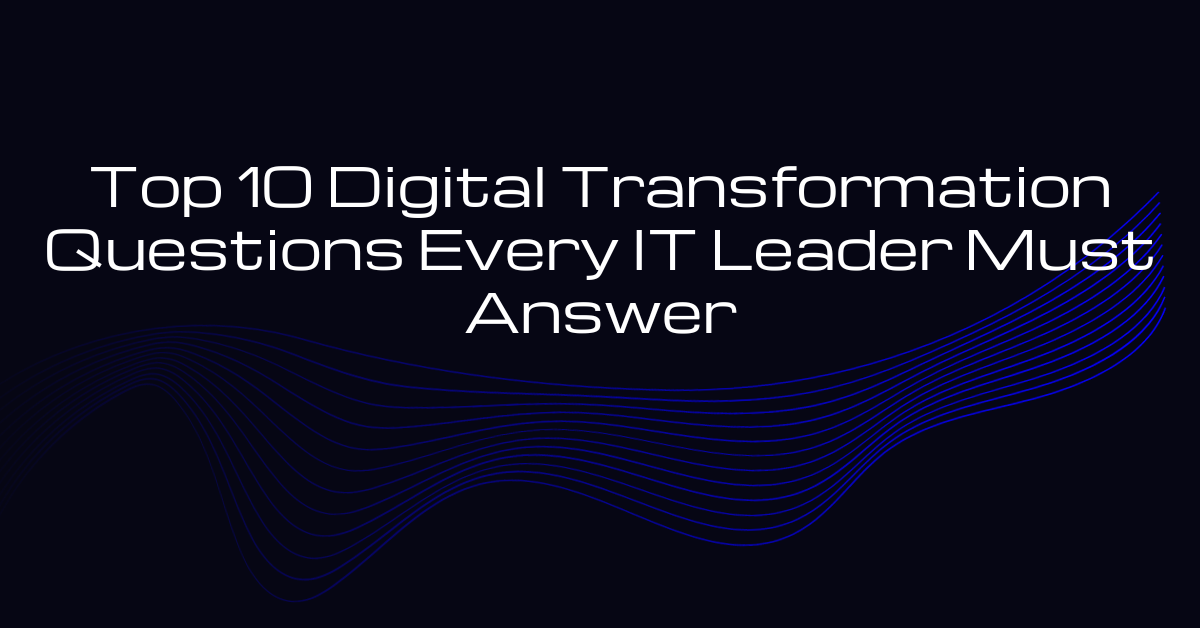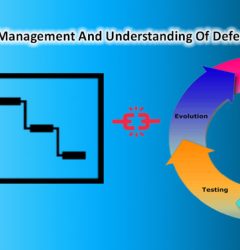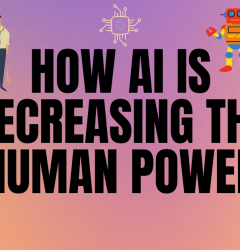13 Oct

In 2023, TEKsystems’ report revealed that 41% of organizations have not met their digital transformation (DX) goals. A parallel study on intelligent information management shows one-third of companies facing challenges in achieving significant digital transformation success. These findings highlight the ongoing struggles in organizational digital transformation efforts. These statistics underscore the challenges faced by many organizations in their pursuit of digital transformation, suggesting a need for reevaluation and course correction.
To assist CIOs in navigating the complex terrain of digital transformation, we collected insights from experienced IT leaders, including current and former CIOs, consultants, and executive advisors. These experts proposed ten critical questions for CIOs to introspectively evaluate their digital transformation strategies and progress, aiming to help them ascertain whether they are on a path to success or at risk of encountering obstacles. These questions serve as valuable signposts to guide CIOs in recognizing and addressing potential issues before their digital transformation initiatives encounter insurmountable challenges. Read our comprehensive Namecheap review to learn about their hosting and domain services.
In this article, you will learn about ten digital transformation questions that every IT leader must answer.
Table of Contents
Top 10 Digital Transformation Questions Every IT Leader Must Answer
1. What is our digital vision and strategy?
2. How can we drive innovation and agility?
3. Are our technology architectures and platforms ready?
4. How can we improve customer experience?
5. How do we empower employees through technology?
6. What are our plans for leveraging data and analytics?
7. How can we automate more business processes?
8. Are our cybersecurity and risk management programs updated?
9. How can we foster organizational adaptability?
10. How can technology investment be optimized?
Top 10 Digital Transformation Questions Every IT Leader Must Answer
Here are ten digital transformation questions every IT leader must answer.
1. What is our digital vision and strategy?
A well-defined digital vision aligned with business goals is crucial for transformation success. IT leaders must identify relevant emerging technologies, secure C-suite buy-in, and establish guiding principles for digital initiatives to chart the path to digital success.
2. How can we drive innovation and agility?
Digital transformation is not a one-time initiative but an ongoing process of innovation and adaptation. IT leaders need to foster a culture of experimentation and agility to respond quickly to digital disruptions. This could involve implementing agile methodologies, setting up innovation labs, running hackathons and accelerating prototyping cycles. The goal is to innovate faster than competitors.
3. Are our technology architectures and platforms ready?
Most legacy IT systems were not built for the digital era. Technical debt and outdated architectures will hinder transformation. IT leaders need to modernize their technology stack by migrating to cloud platforms or shifting to cheap dedicated server from shared servers, optimizing data architectures and pursuing strategies like API-first development. Rationalizing and consolidating disparate systems is also key. This forms the technology foundation for innovation.
4. How can we improve customer experience?
Customer experience is a top priority in the digital economy. IT leaders play a key role in digitizing and personalizing customer touchpoints across channels. This can be done by building cross-functional teams focused on customer journeys, adopting design thinking, integrating systems and data for unified views, and using technologies like AI and machine learning to customize engagements. Delivering seamless omnichannel experiences is vital.
5. How do we empower employees through technology?
The workforce is increasingly mobile and tech-savvy. IT leaders need to develop digital workplace strategies to enable productivity, collaboration and mobility. Steps include providing tools like cloud-based productivity suites, enterprise social networks, mobile device management and video conferencing. Leveraging consumer-grade technologies and a platform approach creates intuitive experiences. Training and change management are also critical.
6. What are our plans for leveraging data and analytics?
Data is a strategic asset in the digital economy. IT leaders need to build capabilities to manage, analyze and gain insights from data to drive competitive advantage. This entails implementing data warehouses and lakes, deploying advanced analytics tools, upskilling teams on data science and adopting emerging technologies like machine learning and AI. Strong data governance and cybersecurity are also crucial.
7. How can we automate more business processes?
Automating manual processes using technologies like RPA, AI and machine learning can enable significant productivity gains and cost savings just like cheap hosting. IT leaders should assess processes that can be automated, set up CoEs to scale deployments and measure ROI. Change management is also required as roles may need redefinition. Automation, when strategically applied, can enable people to focus on higher-value work.
8. Are our cybersecurity and risk management programs updated?
Digital transformation expands the attack surface for organizations. IT leaders must constantly evaluate their cybersecurity and risk management programs. Steps include keeping infrastructure and software updated, security by design, access controls, data encryption, multi factor authentication, backup systems, employee education and response protocols. Cyber agility and resilience are imperative in the digital era.
9. How can we foster organizational adaptability?
Digital transformation requires major organizational change. IT leaders play a key role in driving cultural and structural changes to embed agility and adaptability. Moving to cross-functional teams, upskilling workers, updating processes, modernizing policies and planning for emerging roles are key focus areas. Change management and executive alignment are also crucial to see these initiatives through.
10. How can technology investment be optimized?
IT leaders need to optimize technology investments by taking a portfolio view aligned to strategic priorities. This involves developing business cases, calculating ROIs, creating budgets, assessing current investments and balancing short-term and long-term needs. Agile portfolio management, creating innovation funds and setting metrics help optimize return from technology investments which are the lifeblood of transformation.
Conclusion
Digital transformation is a complex, multi-year journey. It requires technology and organizational change managed in tandem. While daunting, asking the right questions allows IT leaders to chart a course to transform their business in the digital age. The technology landscape will keep evolving but a clear vision, strategy and adaptability will enable companies to stay ahead of disruptions and succeed digitally.
Which question do you ask before starting your digital transformation journey? Share it with us in the comments section below.




















Find Us On